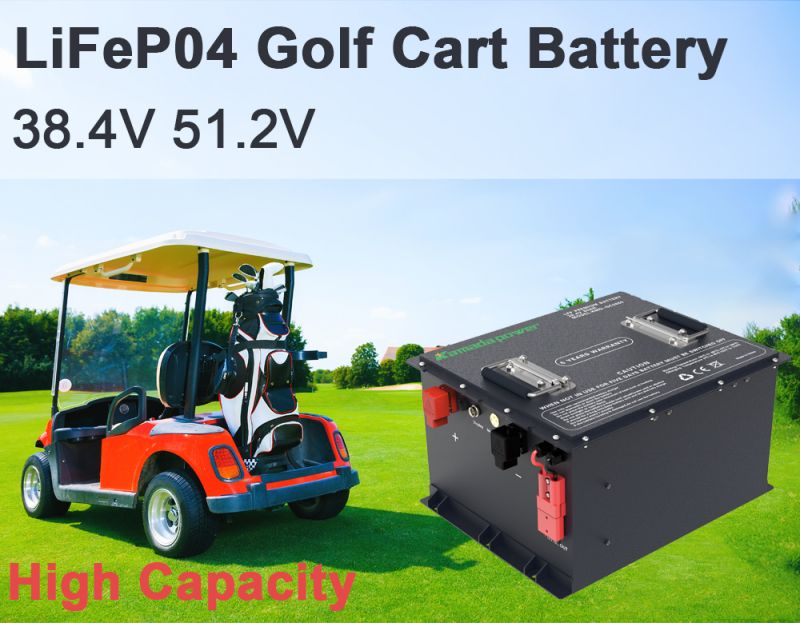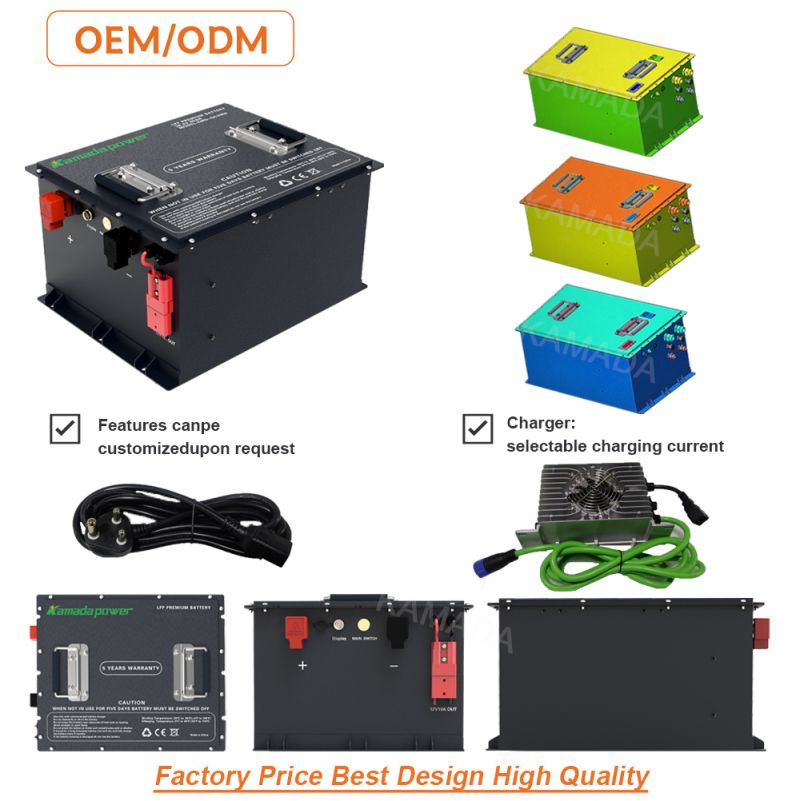
6 Key Issues to Consider for Golf Course Operated Golf Cart Batteries
1. Operational efficiency:
Problem: Frequent battery maintenance needs and long charging times for ball carts affect the smoothness of course operations.
Solution: Research and adopt more advanced battery technologies to reduce charging time, increase battery life and reduce maintenance frequency to improve operational efficiency.
2. Cost containment:
Problem: Batteries are expensive to maintain and replace, putting a financial strain on course operations.
Solution: Consider more durable, better performing batteries to reduce the frequency of replacement and optimize maintenance processes to control overall costs.
3. Sustainability:
Issue: Golf courses may be under pressure to be environmentally friendly and sustainable, and conventional batteries may not meet environmental standards.
Solution: Consider moving to a more environmentally friendly battery technology, such as lithium batteries, to enhance the sustainable image of the course and attract more environmentally conscious golfers.
4. Customer experience:
Problem: Golfers may be dissatisfied with the inconvenience of battery maintenance, charging, etc.
Solution: Enhance the customer experience, which may include providing faster charging facilities, offering reliable battery service, and providing advance warning of potential problems with ball car batteries through technological means.
5. Security:
Problem: Batteries may have safety hazards, such as overcharging and over-discharging.
Solution: Emphasize battery safety by training course staff and golfers to ensure proper battery use and maintenance, and employ an advanced battery management system to monitor and prevent potential safety issues.
6. Technical and managerial training:
Problem: Insufficient knowledge of new battery technologies and best practices among managers and course staff.
Solution: Provide a training program to keep the management team and staff up-to-date on the latest developments in battery technology and how to best optimize the use and maintenance of ball car batteries.
By gaining a deeper understanding of these core pain points and providing practical solutions, golf courses can be helped to better address battery-related challenges, increase operational efficiency, reduce costs, and improve the customer experience, all while complying with environmentally sustainable requirements.

12 Product Characterization Requirements to Consider for Custom Golf Cart Batteries for Golf Courses
1. High cycle life:
Requirement: The course may require batteries to have a longer cycle life to reduce the frequency of replacement and lower maintenance costs
2. Fast charging technology:
Requirement: Ballparks may require batteries to support fast charging technology to ensure that ball carts can be quickly recharged in a short period of time and maintain operational efficiency.
3. Lightweight design:
Requirement: The course may want a battery with a lightweight design to improve handling and energy efficiency while reducing the overall weight of the cart.
4. Environmentally friendly materials and sustainability:
Demand: Stadiums are likely to be increasingly concerned about environmental issues, so batteries may be required to be made of environmentally friendly materials that meet sustainability requirements.
5. Customized voltage and capacity:
REQUIREMENTS: Different models and makes of golf carts may require batteries of different voltages and capacities. Courses may require customized batteries to meet the needs of various cart models.
6. Intelligent battery management systems (BMS):
Requirement: The course may require the battery to be equipped with an advanced battery management system that monitors battery status, temperature and voltage balance to improve overall performance and ensure safe battery operation.
7. Remote monitoring and management functions:
Requirement: Course managers may want to track ball cart battery usage through remote monitoring and management features for timely maintenance and management.
8. Adaptation to different climatic conditions:
Requirements: Courses may require batteries that can adapt to different climatic conditions, including maintaining stable performance in high or low temperatures.
9. Low maintenance requirements:
Requirements: The course may want a simple battery design with low maintenance requirements to reduce the workload of managers.
10. Compliance with industry standards and certifications:
Requirement: The course may require the battery to meet industry standards and certifications to ensure product quality and safety.
11. Security and stability:
Requirement: The course requires a high level of battery safety to prevent overcharging and over-discharging problems and to ensure the safety of carts and course staff.
12. User experience optimization:
Requirement: The course may want the battery to be designed with the golfer’s experience in mind, ensuring comfort and ease of use for the golfer on the course.
By understanding and meeting these customized needs, kamada power battery suppliers can build closer relationships with golf courses and provide golf cart battery solutions that are better suited to golf course operations and golfer needs.
Golf Courses 8 Potential Critical Issues with Current Golf Cart Batteries
1. Cycle life limitations:
Problem: Traditional lead-acid batteries have a limited cycle life and often need to be replaced, increasing the cost of operating the course.
Solution: Explore more advanced battery technologies, such as lithium batteries, to increase cycle life, reduce replacement frequency, and reduce operational burden.
2. Longer charging times:
Issue: Some battery types take longer to charge, which affects the operational efficiency of the course and the golfer’s experience.
Solution: Consider faster charging technology to increase cart availability and reduce golfer wait times.
3. Balance of weight and performance:
Issue: Some battery types are relatively heavy and may affect the performance and handling of the ball cart.
Solution: Find a lighter weight but high performance battery technology to improve ball car handling and energy efficiency.
4. Maintenance requirements:
Problem: Batteries mayrequire regular maintenance such as cleaning terminals, replenishing fluids, etc., adding to the complexity of management.
Solution: Explore battery technologies that are more self-maintaining and reduce maintenance requirements for course managers.
5. Environmental pressures:
Problem: Traditionalbattery types may not meet the environmental requirements of the course and affect the image of the course.
Solution: Consider using more environmentally friendly battery technology, such as recyclable lithium batteries, to enhance the stadium’s sustainable image.
6. Cost pressures:
Issue: High-performance battery technology can be costly, increasing the investment cost of the course.
Solution: Find abalance between cost and performance, possibly by negotiating a more competitive battery supply contract or considering a long-term return on investment.
7. Security issues:
Problem: The safety of batteries can be threatened by problems such as overchargingand overheating.
Solution: Emphasize battery safety with an advanced battery management system to monitor and prevent potential safety issues.
8. Technological upgrading is lagging behind:
Problem: The battery technology of the ball carts used at some courses may be relatively outdated and not enjoying the latest technological advances.
Solution: Regularly update cart battery technology to ensure that the course has state-of-the-art equipment to enhance the overall course image.
The solution to these pain points requires comprehensive consideration of technical, economic and feasibility factors. Choosing a battery technology that suits the needs of the course and enhances performance and sustainability, while mitigating the pain points through scientifically sound management, will help to improve the operational efficiency and attractiveness of the course.
Kamada power provides a complete set of customized golf cart battery solutions to address the above key operational pain points in the operation of golf carts at golf courses. The solution has been widely used in medium and large golf courses in Germany, UK, France, USA and Africa.

Kamada power golf cart battery are customized from Performance (battery life, charging time, energy density), Technology (fast charging, intelligent battery management system), Environment and Sustainability (eco-friendly materials for the batteries, environmentally friendly), Service and Support (service support before and after the sale), Customized Solutions (battery configurations can be tailored to meet the needs of different courses), Cost Effectiveness (lower overall cost to operate the complete solution, lower maintenance costs), User Experience (easier for course managers to use and maintain the batteries, remote management capabilities) ), Cost Effectiveness (lower overall cost to operate the complete solution, longer battery life, lowest maintenance costs), User Experience (easy for course managers to use and maintain the batteries, remote management capabilities), Qualification (CE/UN38.3/MSDS), all-around customization to meet your golf cart battery customization needs.